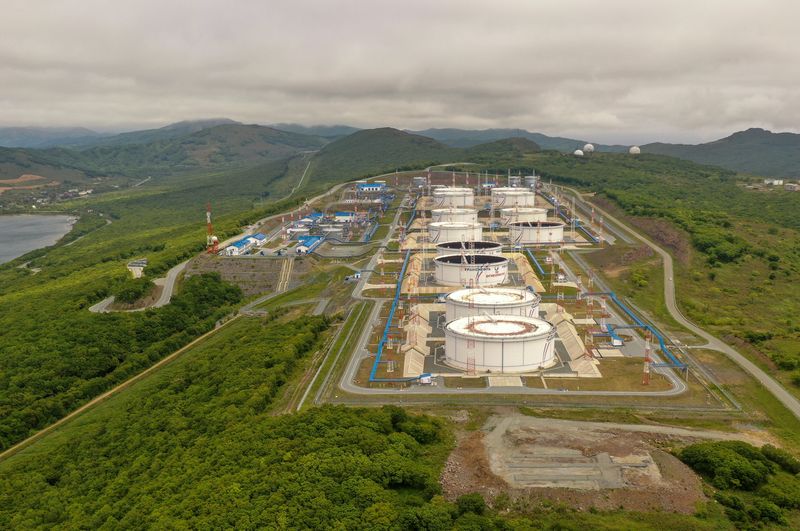Commodities
Oil jumps 2% on Middle East supply fears

By Arunima Kumar
(Reuters) – Oil prices rose on Thursday on investor concern that a widening Middle East conflict could disrupt crude oil flows from the region, though a stronger global supply outlook kept a lid on gains.
futures were up $1.52, or 2.06%, at $75.42 a barrel by 1211 GMT. U.S. West Texas Intermediate crude futures rose $1.58, or 2.25%, to $71.68.
Market fears are mounting over the possibility that Israel might target Iranian oil infrastructure, raising the spectre of retaliation from Iran.
There are concerns that such escalation could prompt Iran to block the Strait of Hormuz or attack Saudi infrastructure, as it did in 2019, said Panmure Gordon analyst Ashley Kelty.
The strait is key logistical chokepoint through which a fifth of daily oil supply passes.
Israel bombed Beirut early on Thursday, killing at least six people, after its forces suffered their deadliest day on the Lebanese front in a year of clashes with Iran-backed Hezbollah.
Israeli Prime Minister Benjamin Netanyahu said Iran would pay for its missile attack against Israel on Tuesday while Tehran said that any retaliation would be met with “vast destruction”, raising fears of a wider war.
“From here, it’s a waiting game to see what the Israeli response will be and I suspect that comes after the conclusion of the Rosh Hashanah holiday tomorrow,” said IG market analyst Tony Sycamore, referring to the Jewish New Year.
“We could see oil prices come off and the geopolitical premium built-up in prices fade, should Israel decide to press its advantage against Hezbollah in southern Lebanon rather than retaliate directly on Iranian soil or assets,” said Harry Tchilinguirian, head of research at Onyx Capital Group.
Meanwhile, in Libya, National Oil Corp (NOC) lifted the force majeure at all Libyan oilfields and terminals, the state oil company said in a statement on its Facebook (NASDAQ:) page, potentially ending a crisis that has heavily reduced oil output.
inventories rose by 3.9 million barrels to 417 million barrels in the week ended Sept. 27, the Energy Information Administration said, compared with Reuters poll expectations of a 1.3 million barrel decline.
“Swelling U.S. inventories added evidence that the market is well supplied and can withstand any disruptions,” ANZ analysts said in a note.

Fears have been tempered by OPEC oil output capacity and the fact that global crude supplies have yet to be disrupted by unrest in the key producing region.
OPEC has enough spare capacity to compensate for a full loss of Iranian supply if Israel knocks out that country’s facilities.
Commodities
Oil prices rise; U.S. crude inventories plunge, Russia-Ukraine truce eyed
Commodities
India’s Reliance to stop buying Venezuelan oil over US tariffs, sources say
Commodities
Oil prices climb on Venezuela supply worries

 Forex3 years ago
Forex3 years agoForex Today: the dollar is gaining strength amid gloomy sentiment at the start of the Fed’s week

 Forex3 years ago
Forex3 years agoUnbiased review of Pocket Option broker

 Forex3 years ago
Forex3 years agoDollar to pound sterling exchange rate today: Pound plummeted to its lowest since 1985

 Forex3 years ago
Forex3 years agoHow is the Australian dollar doing today?

 Cryptocurrency3 years ago
Cryptocurrency3 years agoWhat happened in the crypto market – current events today

 World3 years ago
World3 years agoWhy are modern video games an art form?

 Commodities3 years ago
Commodities3 years agoCopper continues to fall in price on expectations of lower demand in China

 Economy3 years ago
Economy3 years agoCrude oil tankers double in price due to EU anti-Russian sanctions



























